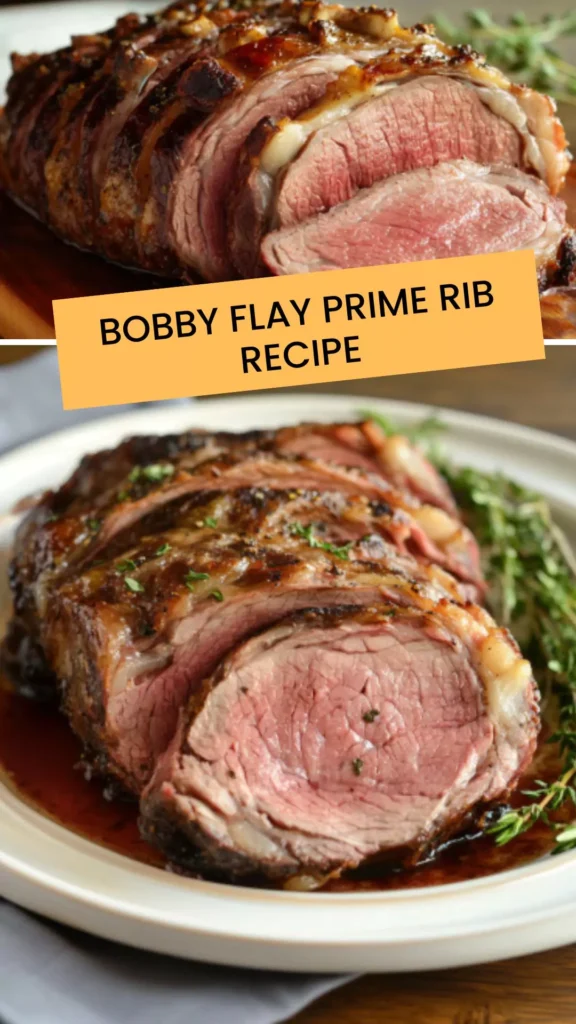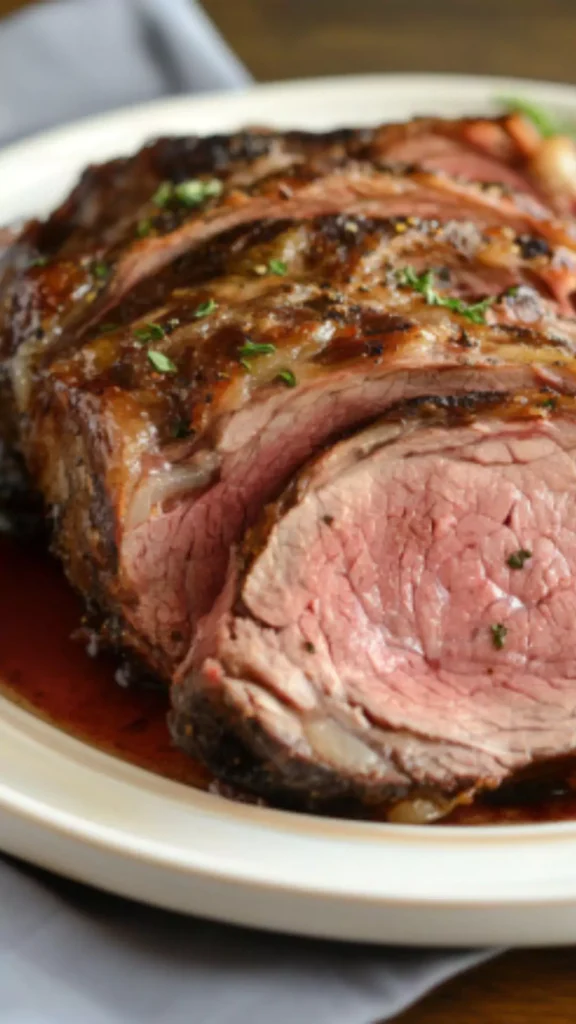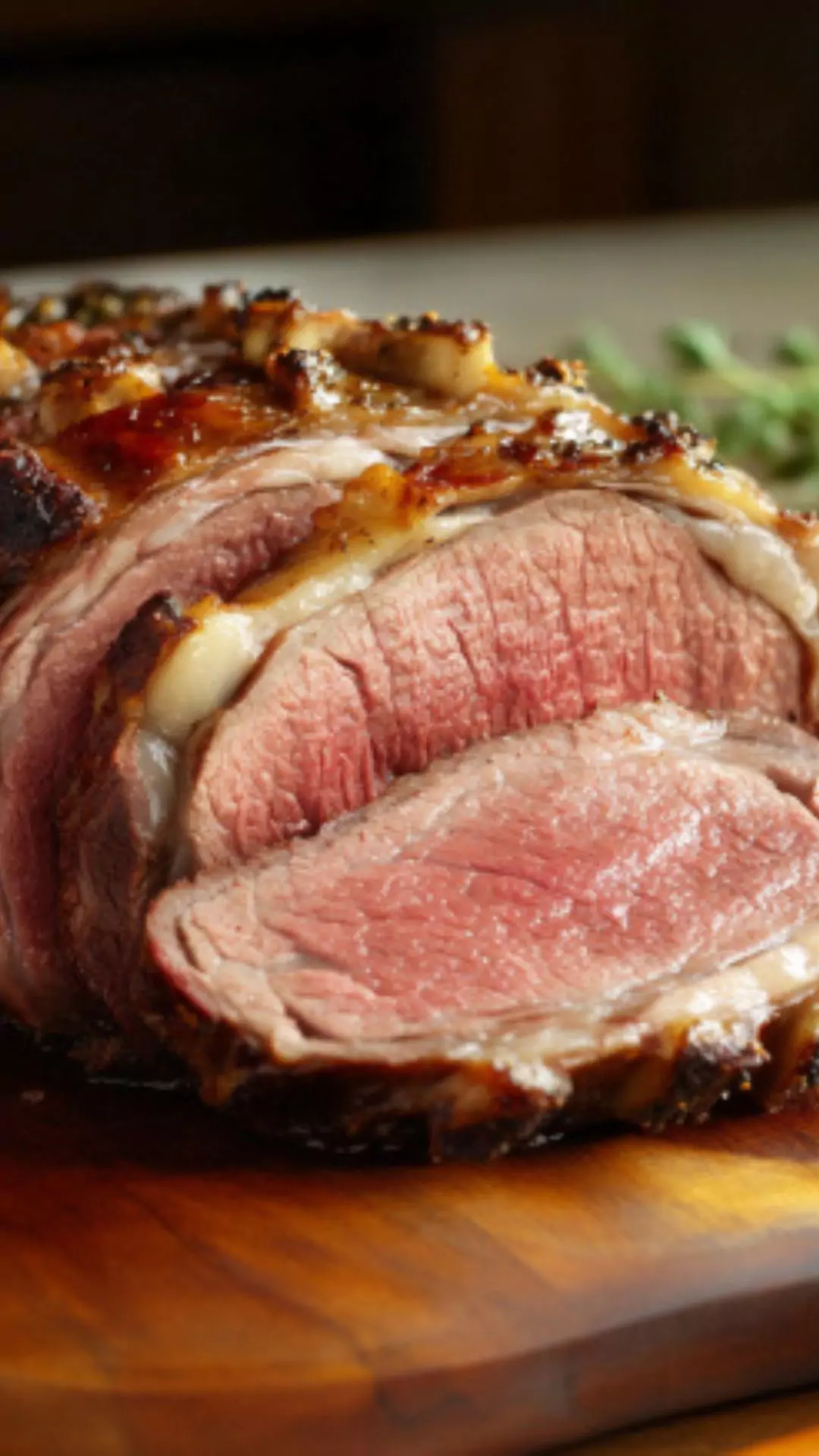Before diving into the delicious world of Bobby Flay’s prime rib recipe, let’s explore some ideal side dishes to serve alongside this sumptuous roast. The prime rib, with its rich, beefy flavor, deserves accompaniments that complement rather than overshadow it.
Start with creamy mashed potatoes; nothing beats classic mashed potatoes that are creamy, buttery, and slightly garlicky, providing a comforting balance to the savory richness of the prime rib. Next, consider roasted vegetables; a mix of seasonal veggies like carrots, Brussels sprouts, and bell peppers, tossed in olive oil and herbs, can add both color and flavor to your plate.
Yorkshire puddings are another excellent choice; these light and airy pastries are perfect for soaking up the delicious juices from the prime rib, making every bite feel like a special occasion.
Lastly, don’t forget the horseradish sauce; a bite of horseradish adds a zesty kick that cuts through the richness of the meat, whether served creamy or as a fresh grated condiment.

I remember the first time I made Bobby Flay’s prime rib. It was a chilly December evening, and I wanted to impress my friends with a holiday dinner that would leave them raving. As I stood in my kitchen, the aroma of garlic and herbs filled the air.
My heart raced a little—would it turn out as delicious as I hoped? Spoiler alert: it did! This recipe has become a staple in my home because it’s simple yet shows off an impressive flair. When hosting gatherings or special occasions, having a show-stopping dish like prime rib can elevate the whole experience.
You will also like the following Dinner recipes!
- Best Hairy Hikers American Meatloaf Recipe
- How to make Chinese Beef Noodles
- Easy Texas roadhouse smothered chicken with jack cheese recipe
What is Bobby Flay’s Prime Rib?
Bobby Flay’s prime rib recipe is a beautifully seasoned roast that uses high-quality cuts of beef, enhancing their flavor with minimal ingredients. This dish is cooked slowly to ensure tenderness, resulting in a juicy and flavorful centerpiece for any meal. The combination of garlic, Dijon mustard, and fresh herbs creates a savory crust that perfectly pairs with the rich interior of the meat.
Why This Recipe Works
There are plenty of prime rib recipes out there, but Bobby Flay’s version stands out. Here are four reasons why this recipe works so well:
Quality Ingredients: Bobby emphasizes using the best cuts of beef you can find. A bone-in prime rib roast is not just about flavor but also about creating an impressive presentation.
Balanced Seasoning: The simple yet effective combination of sea salt, black pepper, and fresh herbs creates a flavor profile that enhances what prime rib is all about without overpowering it.
Cooking Technique: Flay’s slow roasting technique ensures that the meat retains its juices while achieving that beautiful crust. It’s a foolproof way to reach the perfect doneness.
Versatile Pairings: This prime rib can be the star of any meal. Whether paired with traditional sides or something adventurous, it fits seamlessly into numerous dining experiences.
Ingredients You’ll Need to Make Bobby Flay’s Prime Rib
- 8 cloves of garlic, finely sliced
- 1 bone-in prime rib roast (weighing 6 to 7 pounds)
- 1 tablespoon fresh thyme, finely chopped
- Sea salt and freshly cracked black pepper, to taste
- 1 tablespoon Dijon mustard
- 1 tablespoon Worcestershire sauce
- 2 cups robust red wine
- 4 cups rich beef broth

How to Make This Crave-Worthy Prime Rib
Step 1: Prepping the Roast
Start by letting your prime rib come to room temperature for about 2 hours. This step is crucial; it promotes even cooking throughout the meat. While waiting, combine the sliced garlic, thyme, salt, and pepper in a small bowl.
Step 2: Seasoning
Making incisions in the prime rib will allow the flavors to penetrate better. Using a sharp knife, create slits about 1-inch deep in the roast. Stuff the garlic mixture into those slots.
Step 3: Marinade it Magic
In a separate bowl, mix the Dijon mustard and Worcestershire sauce together. Rub this mixture generously over the entire roast. Not only does this add flavor, but it also forms a nice crust during cooking.
Step 4: Getting Ready for the Oven
Preheat your oven to 500°F (260°C). This high temperature is vital to developing that beautiful crust. While the oven heats, prepare a roasting pan with bones facing upward (they will support the roast).
Step 5: Roasting
Place the seasoned prime rib in the roasting pan and into the oven. Roast at 500°F for about 20 minutes to get that crust going. After that, reduce the oven temperature to 325°F (163°C). Cook for about 12-15 minutes per pound for medium-rare. Make sure to use a meat thermometer; it should read 120°F (49°C) for rare and about 130°F (54°C) for medium-rare.
Step 6: Resting the Meat
Once done, remove the roast from the oven. Tent it loosely with foil and let it rest for at least 20-30 minutes. Resting is key. It allows juices to redistribute throughout the meat.
Step 7: Making the Gravy (Optional)
While the meat rests, take the roasting pan and pour out excess fat, leaving behind the drippings. Place the pan over medium heat. Add red wine and beef broth, scraping the bottom to release all the delicious bits. Let it simmer and reduce until slightly thickened.
Step 8: Carving and Serving
When ready to serve, slice the prime rib into thick cuts and serve with the gravy. Don’t forget those enticing sides we talked about earlier!
Tips for the Perfect Prime Rib
Use a Meat Thermometer: Invest in one if you don’t have it. It ensures your roast is cooked to your desired doneness.
Avoid Overcooking: For the best flavor and tenderness, aim for medium-rare.
Let the Roast Rest: Patience pays off. Allowing the meat to rest gives you tender, juicy slices.
Choose Quality Beef: Quality matters. Prime-grade beef is well-marbled and incredibly flavorful; it makes all the difference.
Experiment with Dry Aging: If you’re feeling adventurous, consider dry-aging your rib roast for a week or more. It deepens the flavor remarkably.

Nutrition Information
bobby flay prime rib recipe nutrition facts
How to Store the Leftovers
Leftovers are a blessing! Once your prime rib cools down, wrap it tightly in aluminum foil or plastic wrap. It will stay fresh in the refrigerator for up to 3-4 days. You can also freeze portions in an airtight container for up to 3 months. Just ensure to thaw it in the refrigerator for best results before reheating.
Recommended Side Dishes for Bobby Flay’s Prime Rib
Creamed Spinach
This classic side balances the bold flavor of the beef. Heavy cream, garlic, and nutmeg come together to create a decadent dish that will have everyone coming back for seconds.
Garlic Bread
Garlic bread is an easy, crowd-pleasing addition. Crunchy on the outside and soft on the inside, it’s perfect for soaking up any leftover jus from the prime rib.
Caprese Salad
The freshness of mozzarella, ripe tomatoes, and basil drizzled with balsamic reduction offers a light contrast to the rich beef. This salad brings both color and flavor to the table.
Macaroni and Cheese
You can never go wrong with mac and cheese. Its creamy and cheesy goodness complements the savory elements of the prime rib and creates a delightful comfort food experience.
Ingredient Substitutes
Here are some alternatives in case you find yourself missing a few things from your pantry.
Bone-in Prime Rib Roast
- Ribeye Roast: If prime rib is unavailable, a ribeye roast works well, offering similar flavors in a boneless form.
Fresh Thyme
- Dried Thyme: You can use dried thyme if fresh isn’t accessible. Use about one-third of the amount, as dried herbs are more concentrated.
Robust Red Wine
- Cooking Sherry: If red wine is unavailable, substitute with cooking sherry for deglazing the roasting pan.
Beef Broth
- Vegetable Broth: While it might change the flavor profile somewhat, vegetable broth can work in a pinch for the gravy.

Equipment
- Small bowl
- roasting pan
Ingredients
- 8 cloves of garlic finely sliced
- 1 bone-in prime rib roast weighing 6 to 7 pounds
- 1 tablespoon fresh thyme finely chopped
- Sea salt and freshly cracked black pepper
- 1 tablespoon Dijon mustard
- 1 tablespoon Worcestershire sauce
- 2 cups robust red wine
- 4 cups rich beef broth
Instructions
Step 1: Prepping the Roast
- Start by letting your prime rib come to room temperature for about 2 hours. This step is crucial; it promotes even cooking throughout the meat. While waiting, combine the sliced garlic, thyme, salt, and pepper in a small bowl.
Step 2: Seasoning
- Making incisions in the prime rib will allow the flavors to penetrate better. Using a sharp knife, create slits about 1-inch deep in the roast. Stuff the garlic mixture into those slots.
Step 3: Marinade it Magic
- In a separate bowl, mix the Dijon mustard and Worcestershire sauce together. Rub this mixture generously over the entire roast. Not only does this add flavor, but it also forms a nice crust during cooking.
Step 4: Getting Ready for the Oven
- Preheat your oven to 500°F (260°C). This high temperature is vital to developing that beautiful crust. While the oven heats, prepare a roasting pan with bones facing upward (they will support the roast).
Step 5: Roasting
- Place the seasoned prime rib in the roasting pan and into the oven. Roast at 500°F for about 20 minutes to get that crust going. After that, reduce the oven temperature to 325°F (163°C). Cook for about 12-15 minutes per pound for medium-rare. Make sure to use a meat thermometer; it should read 120°F (49°C) for rare and about 130°F (54°C) for medium-rare.
Step 6: Resting the Meat
- Once done, remove the roast from the oven. Tent it loosely with foil and let it rest for at least 20-30 minutes. Resting is key. It allows juices to redistribute throughout the meat.
Step 7: Making the Gravy (Optional)
- While the meat rests, take the roasting pan and pour out excess fat, leaving behind the drippings. Place the pan over medium heat. Add red wine and beef broth, scraping the bottom to release all the delicious bits. Let it simmer and reduce until slightly thickened.
Step 8: Carving and Serving
- When ready to serve, slice the prime rib into thick cuts and serve with the gravy. Don’t forget those enticing sides we talked about earlier!
Notes
Nutrition
Frequently Asked Questions
How can I tell when my prime rib is done?
Use a meat thermometer for the most reliable results. For rare, aim for 120°F, 130°F for medium-rare, and 145°F for medium. Remember, the temperature will continue to rise while resting.
What’s the difference between prime rib and ribeye?
Prime rib comes from the primal cut of the rib, cooked as a whole roast, while ribeye steaks come from the same area but are cut into individual steaks. Flavor-wise, they’re quite similar but differ in preparation.
Can I make this recipe in advance?
You can prepare the seasoning and rub ahead of time and let the roast sit in the refrigerator overnight—this helps the flavor penetrate the meat. However, it’s best to cook it fresh on the day of serving.
What if I can’t find bone-in prime rib?
If you can’t find one, look for a boneless rib roast. While you won’t get the same presentation, the flavors will remain delightful.
How do I reheat leftover prime rib?
To reheat, gently warm in the oven at 250°F, covered with foil, until just warmed through. This helps prevent drying out.
Conclusion
Bobby Flay’s prime rib recipe has become a true staple in my culinary repertoire. It’s a dish that not only impresses guests but also satisfies with its rich flavors and tender meat. With a few simple steps and some cozy side dishes, you’ll create a dining experience that celebrates good food and great company.
Cooking can bring people together. This recipe not only nourishes but also creates lasting memories. So, fire up that oven, gather your loved ones, and get ready for a delicious feast. You won’t regret it!
You’ll also like these latest recipes!
- Best Bobby Flay Meatloaf Recipe
- How to make Bobby Flay Crispy Rice
- Copycat Bobby Flay Meatball Recipe

Rebecca Novak is a trained chef with over 10 years of experience in the food industry. She has worked in both fine dining and casual Hungarian restaurants and specializes in creating dishes using fresh, seasonal ingredients. She also loves exploring different cuisines worldwide, which allows her to bring unique flavors and ideas to the recipes she creates for Hungarianchef.com. Read more
